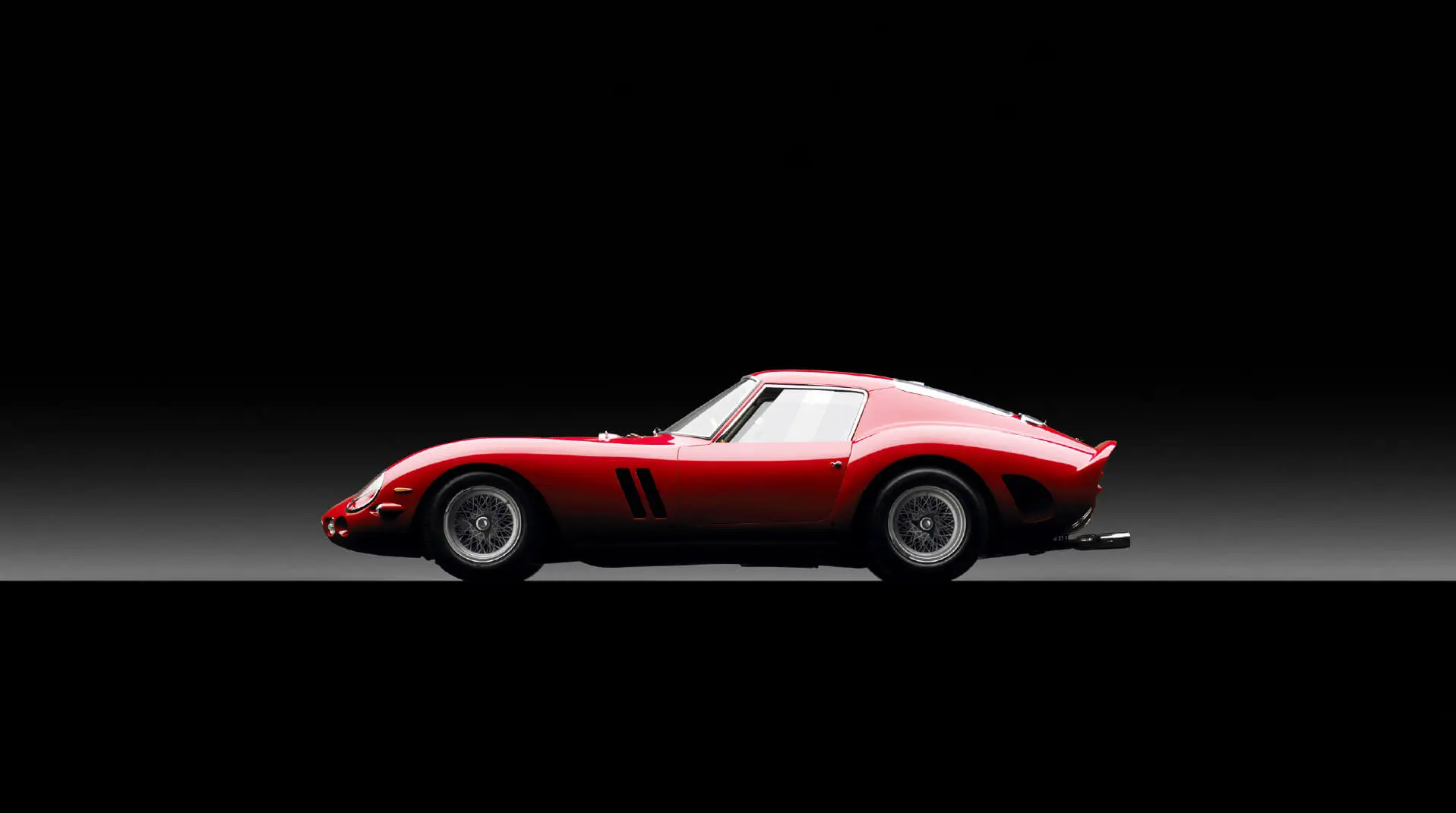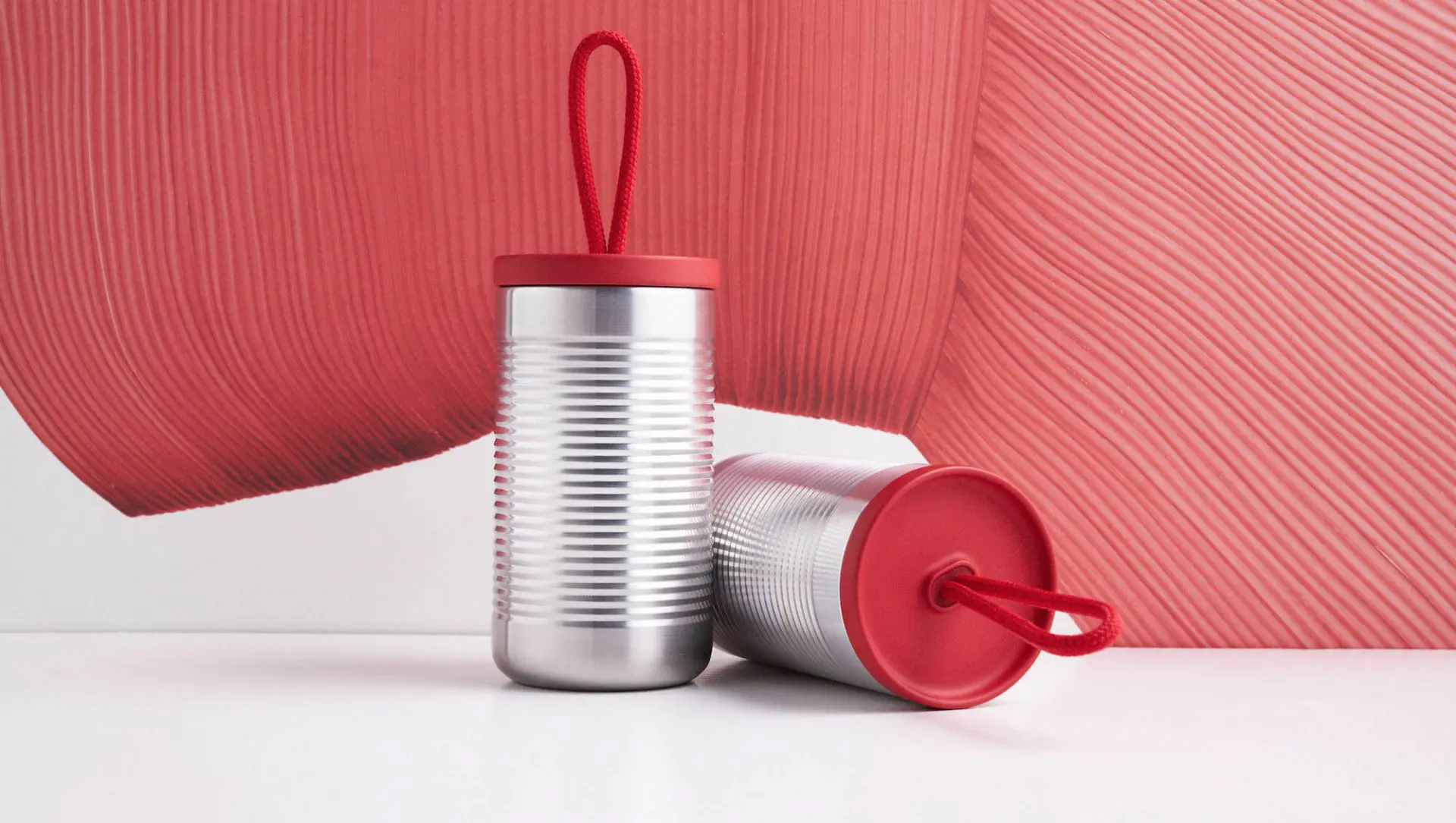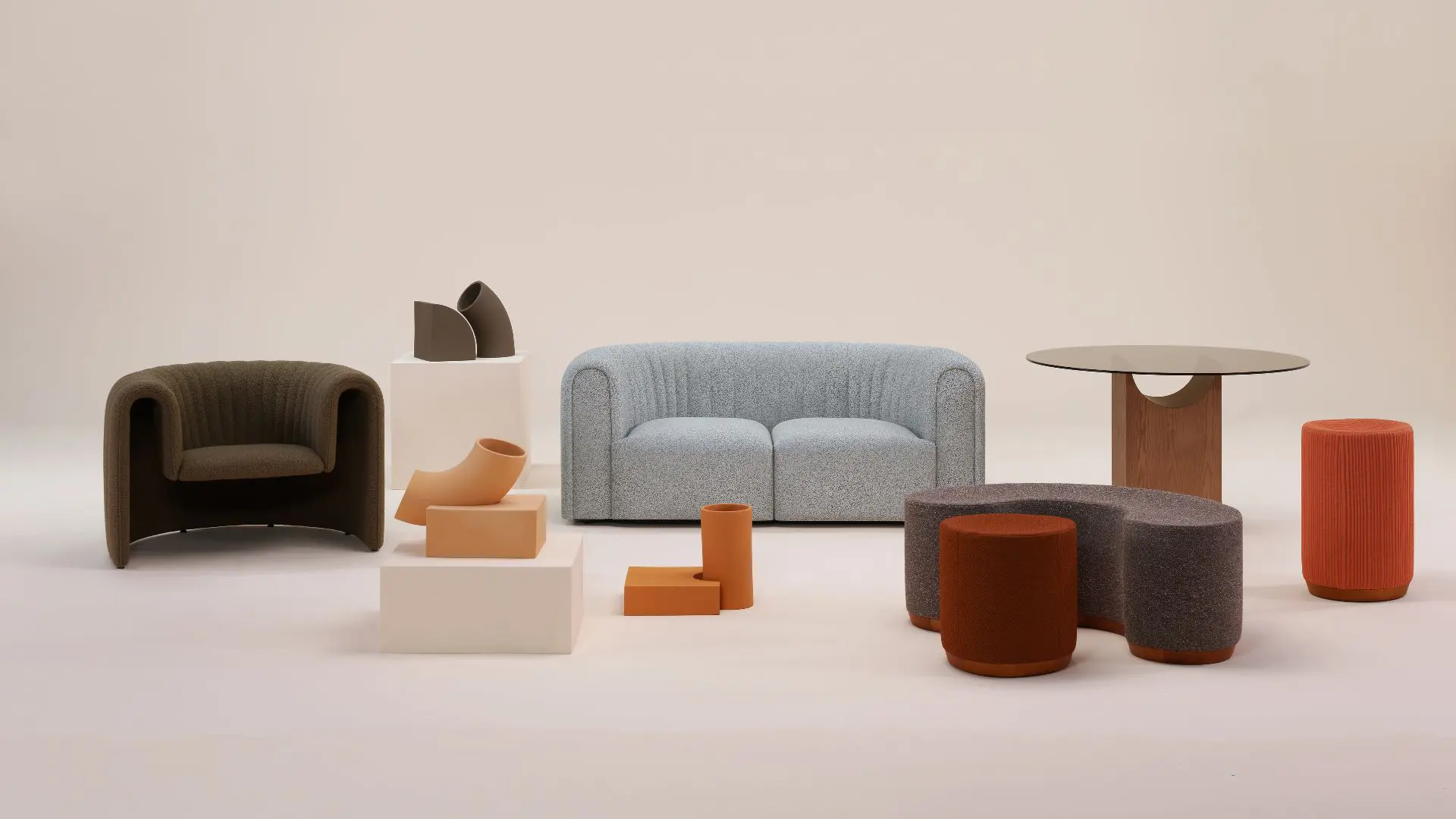A visionary in form and function: the enduring impact of Dan Harden on industrial design
From iconic products to bold perspectives, this conversation explores what it truly means to design with purpose in a rapidly evolving world.

With over four decades at the forefront of industrial design, Dan Harden—Founder, CEO, and Principal Designer at Whipsaw Inc.— has carved out a legacy defined by curiosity, craftsmanship, and uncompromising integrity. In an era where design transcends objects to shape experiences, brands, and cultures, Harden remains a beacon of thoughtful innovation.
His work is a testament to the power of balancing creativity with pragmatism, and his perspective is forged through hundreds of award-winning products, cross-disciplinary collaborations, and a relentless pursuit of meaning in design. In this candid conversation, Harden shares his evolved outlook on “good design,” the nuanced interplay between intuition and strategy, and the essential role of designers in addressing the complex challenges of our time.

With an extraordinary career marked by meaningful partnerships and hundreds of awards, how has Dan Harden’s perspective on “good design” evolved from the start of his journey to today?
Dan Harden:
“At the start of my journey I had a simpler view of what “good design” meant. I thought it was all about “talented individuals creating beautiful objects”. I remember reading The Fountainhead and relating to the main character Howard Rorke, a brilliant young architect who worked alone and refused to compromise with anyone unwilling to innovate. I had a similar emphatic attitude about design, and to this day my passion for design and uncompromising excellence is what drives me. Over time one’s perspective about things naturally evolves and deepens as you build a career.
For example, being a consultant for as long as I have has taught me a lot about people, probably because consulting is about designing relationships as much as it is about designing products. Building a good team, forming a group purpose, meshing with your client, and getting everyone to rally is so critical in design, but I had no idea how important those soft skills were when starting out. I also learned how important it is to understand and respect the bordering disciplines of engineering, marketing and business.
Compared to the start of my journey, design has gotten more complex. It’s evolved from designing objects to designing experiences and businesses. Design is less focused on the artifact – it’s now also an action and a way of thinking. Big teams construct solutions using stakeholder input, insight gathering and iterative analysis – then refine, perfect, and compose a tactical choreography of developmental steps …all the while meeting lofty strategic objectives as outlined on a spreadsheet. This more structured approach leaves less room for spontaneous creative combustion, which I think is the most exhilarating part of design.

Sometimes I get frustrated by how overly complex the design field has gotten, and I often promote a simpler down to earth approach. That’s what hasn’t changed for me over all these years. I think the most important contribution design can make is the quality of the end result, no matter how you get there. Just stay true to the tenets of your beliefs and keep things simple and real.”
What makes a designer a great designer? What qualities should they cultivate to excel in their craft?
Dan Harden:
“Greatness is subjective, but for me as an industrial designer here are my own humble pointers that I aspire to:
Diminish the self, and just watch and listen to your subject with a kind of meditative awareness. Your subject is the problem, the context and the user. When you diminish the self, the opportunities to internalize your subject will happen more naturally because as you remove preconceptions and ego, the truths and transcendence you seek are what remain.
Learn to trust your instincts. There are too many external influences around us in our modern society that compete for our attention. Stay insanely curious about the world around you, like a child, and let the idiosyncratic things inspire you. There’s design gold in the peculiar, so give your crazier ideas a chance. Never allow yourself to be uninspired or complacent about an opportunity. Always look beyond what you know, and don’t get formulaic. Stay fresh.

A great designer should cultivate their inspiration, wherever you find it, in order to create inspirational work – which to me must be new, beautiful and clever. A great designer can inspire others in words and actions too, which has a compounding effect especially on other designers. Great designers should be able to inspire an engineer with ingenuity; a marketing exec with a unique story that anchors a design; a CEO with a bold strategic vision and ultimately inspire the end user with something lovely.
Great designers have a gritty determination to go deeper and deeper into every single detail. They say God and the devil are in the details, and I’ve certainly found that to be true. Joy and agony are part of every deep creative endeavor. To do good design is hard, and that’s partly what makes it worthwhile. You won’t become great by doing it the easy way.
Clarity is important. Clear communication, clear concept, clear purpose. Learn how to communicate to left brain linear thinkers because those are often the one’s you need to sell to. Try to get a crystal-clear understanding of your client’s and the end user’s perspectives so you don’t design in a vacuum.
Great designers have a yearning to materialize design, which in the case of industrial design means shipping product. They work to get products on the market because only then are design values appreciated and consumed in abundance. Each product is a little carrier pigeon of values, so shipping is your chance to make good in the world. When I see a stranger happily using something we created, I smile inside and think “cool, it worked”.”

Your website describes your approach as both “creative and pragmatic.” How do you strike a balance between the two, and where do they intersect or diverge?
Dan Harden:
““Balance” is an important word in design. I named the company after it (a Whipsaw is a two-handle saw that requires reciprocity and balance to work). Being both creative and pragmatic in industrial design means going far-out conceptually while also being realistic about what can be achieved in mass production.
All design projects have creative and pragmatic elements within them, and as a designer you need to figure out the ideal ratio based on the subject, the objective, and the boundary conditions. For example, if you’re designing for a luxury brand your creative and emotional effort should probably exceed your pragmatic limitations, at least at first. If you’re designing a surgical instrument its function, safety and usability factors will always take precedence. The key with every project is to merge the creative and the pragmatic; the art and the science; the design and the engineering. The fulcrum is usually where genuine innovation resides.
Each designer is different on how you strike a balance, but I like to start with a creative burst without overthinking the limitations quite yet. How do I want my solution to make someone feel? How can I think abstractly about the problem? I’m always surprised by what comes out of these initial dreamy contemplations. After that burst I break down the problem in sections. I like to think of it like scaffolding. You erect a skeletal structure of facts and absolutes from which you can start building. Then start a reciprocal back and forth between the creative and the pragmatic as you proceed.”

As design becomes increasingly vital as a strategic skill in companies, do you believe it has reshaped roles like marketing? If so, in what ways? If not, why not?
Dan Harden:
“Design has had a big influence on all surrounding fields including marketing, engineering and management – mostly because people finally clued into what design actually is. It’s a powerful tool because it goes to the heart of who we are as humans. We all make buying decisions by what our senses tell us. How something looks, feels or sounds is what creates a perception. If that perception is appealing, and if it aligns with your need and your identity, you buy it. In simple terms, that’s design.
It has become common for companies to make design the hero of the brand. Companies like Apple, Lululemon, Samsung and Nike have leaned so heavily on design that consumers would be hard pressed to separate design elements from brand and marketing elements. They are one and the same. I hear marketing teams nowadays espousing terms like “design thinking, design language and design matters” . Sometimes it makes me cringe, but the intention is good.”

Given the complexity of today’s world and evolving consumption patterns, what key factors do you prioritize when developing a new product?
Dan Harden:
“We are seeing considerable change in society as technology, consumerism and social media are having a disproportionate influence on our well-being. Progress in these areas was supposed to free us but instead has left many folks feeling empty. Our attention spans have shrunk, I suppose partly as a defense mechanism since the flood of stuff being thrown at us needs real-time filtering. So much product is being produced and much of it is mediocre design to the point where consumers don’t care since their products are consumed and discarded as fast as a TikTok video.
We can’t change these megatrends, but we can control what we choose to create and produce. At Whipsaw we have a noble set of values that we always instill in our work – out of principle and as a bulwark against all the negative tides. First and foremost, we prioritize quality. Quality of the end user experience, and quality of the product itself, including its actual purpose. It needs to earn its right to exist, including being ecologically responsible. Joy is another key factor we prioritize. A good product should make you feel good and in some way improve your life.”

Do you place greater importance on the company brief or on the research conducted during the ideation and prototyping phases?
Dan Harden:
“The client’s brief is a good starting point. We expect that it accurately captures their goals at the time of our initial engagement. However, it’s often the case that once we dive in and start to define the problem in more detail through research, workshops and strategy, the target starts to shift. We expose more subtlety and depth to the objectives and the brief gets challenged. This is a natural outcome of a good design process, but it can upset the apple cart if the client isn’t ready for it.
When we start exploring concepts the objectives can change again, especially when you hit upon something unexpected and exciting. Your prototype, which is your most telling final result, can change the brief yet again. The important thing to remember throughout the process is to always stay open and constantly reiterate on the “why factors” as you go.”

With over 40 years of innovation behind you, does the world today align with the vision of innovation you had 40 years ago? What progress has been made, and what gaps still remain?
Dan Harden:
“In hindsight, my vision of innovation that I had 40 years ago was sweetly naïve. I hoped and expected that civilization was heading for a state of utopia, complete with societal harmony, flying cars, cured cancer, smart robots everywhere, and a colonized Mars. I thought design would soon provide a beautiful new identity for that shiny white grandiose future.
Well, that future sure didn’t happen, but something perhaps more important did happen that will set the stage for all things to come, and few saw it coming. It’s the innovation in the micro world. The things you can’t see that makes everything work from smartphones to rockets. Microprocessors, artificial intelligence, quantum nanoscience, the Internet, GPS, gene mapping, etc. These discoveries are the tiny building blocks that will allow the future I had originally imagined to flourish, and we’re starting to see it unfold now in AI, quantum computers, robots, and self-driving cars. We live in an incredibly exciting time for tech innovation.
On the flip side, there are many things that are hugely disappointing, especially all the ignorance we see nowadays, asserted by our so-called leaders. A belief that truth and fact are “subjective interpretations, ” which makes every bone in my designer body ache. Reality is not a fungible commodity. A belief that progress is about creating more wealth instead of general betterment for humanity or the planet appalls me. Innovation for the masses around food, shelter, clean water, education and healthcare are marginal at best. There is a breathtaking amount of innovation beyond tech that is desperately needed everywhere I look.

So, yes, when you peel back reality you start to see gaps – big gaps. This worldly mess we’re in should be a big wakeup call for designers. Designers are good gap fillers with their unique right brain problem-solving skills, and their born instinct to fix things. We designers also have a natural tendency to feel empathy, which the world needs much more of today. There’s a whole lot to do my friends.”













